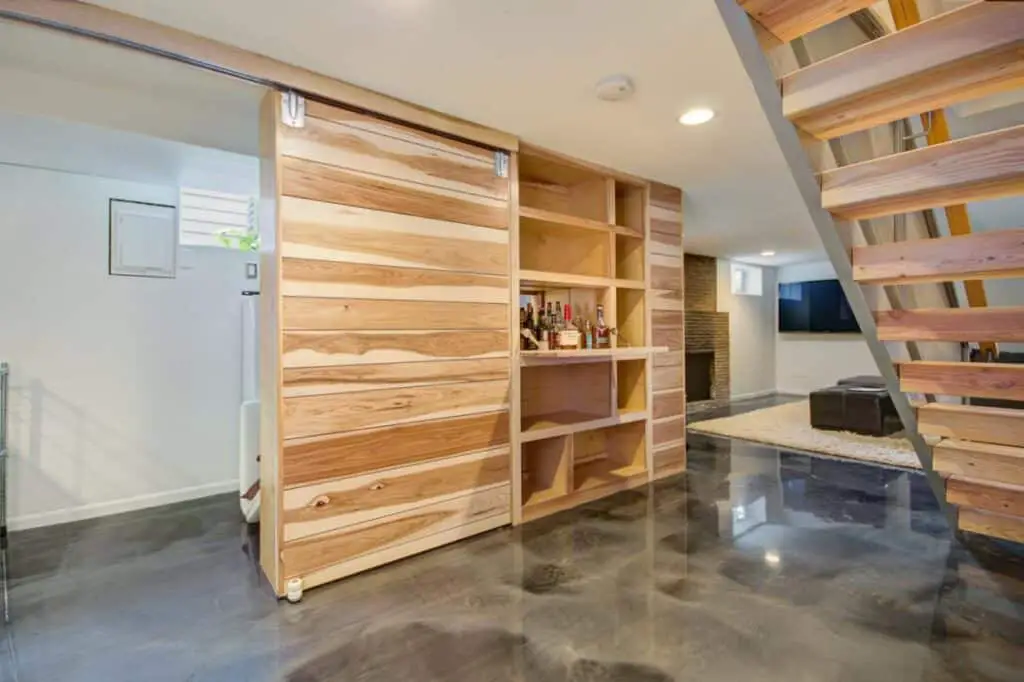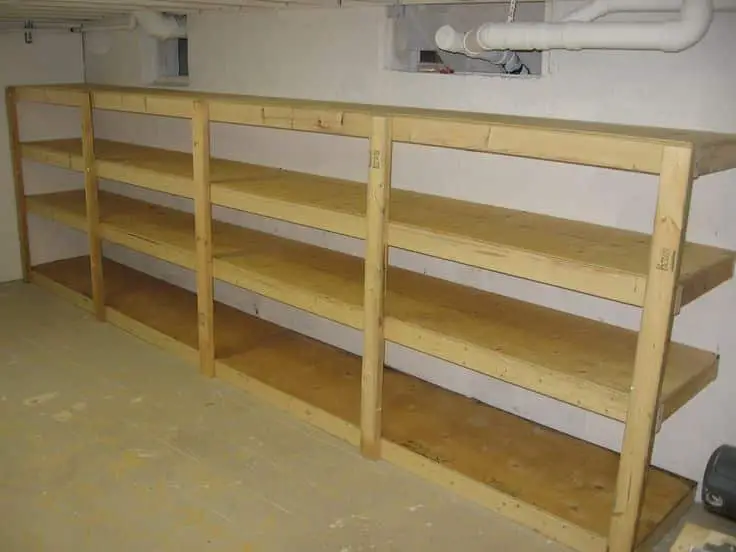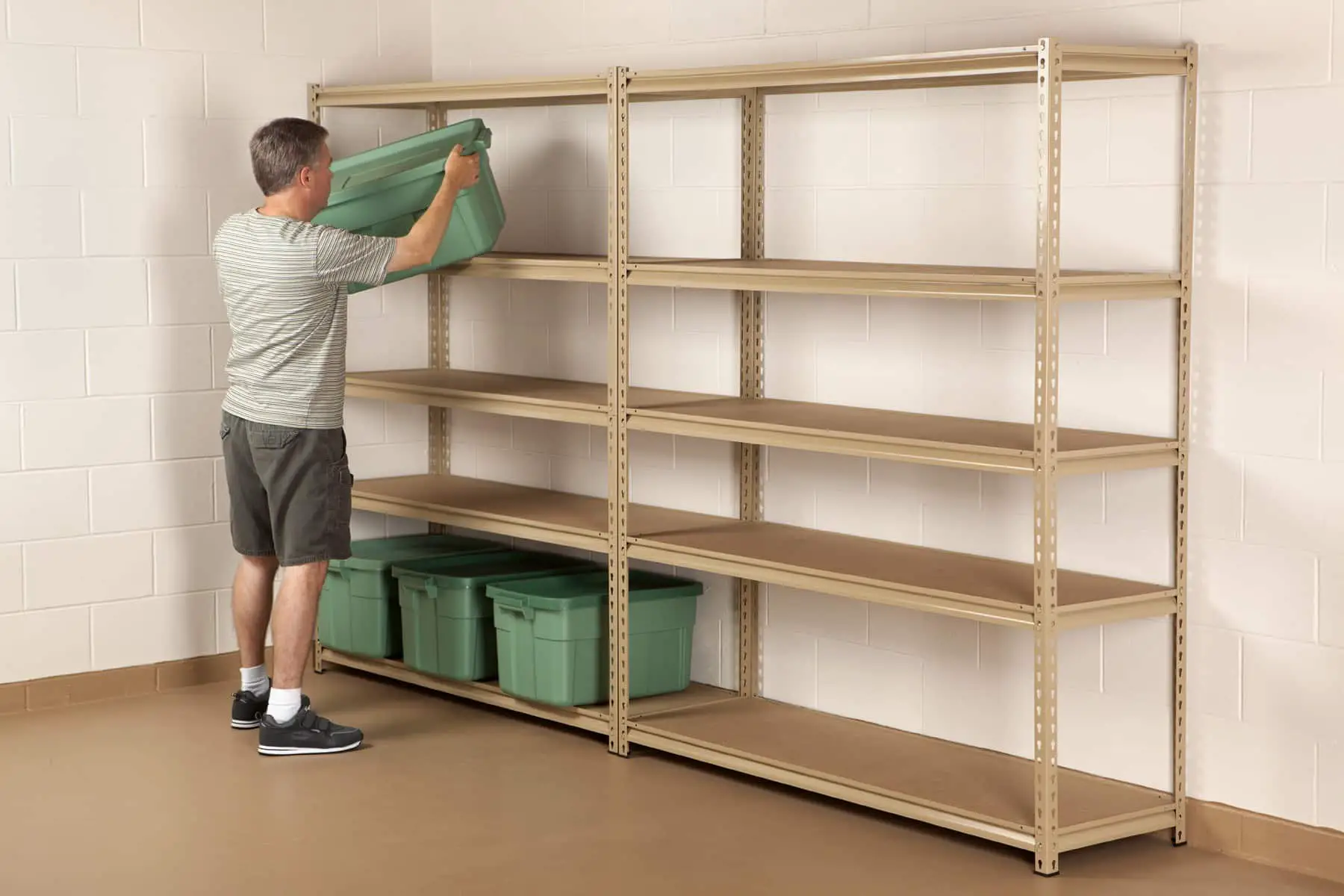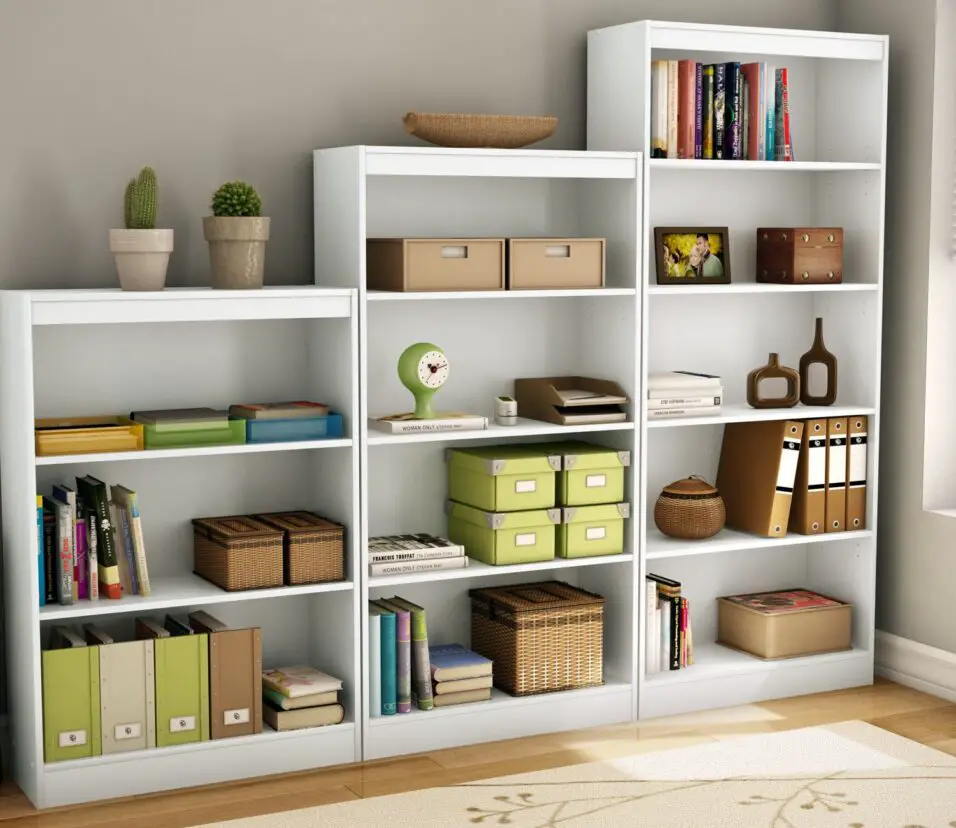How To Build Basement Storage Shelves
Introduction
Plans are the first thing you need to do to learn how to build basement storage shelves. We’ll show you how to measure accurately, figure out the best size for your shelves, and look at the space you have in your basement. It is very important to plan ahead so that your shelves fit in with the rest of your basement and make the best use of the room you have. Finally, we’ll talk about some clever ways to make the most of the space you have for storage in your basement.
Now that you have a clear idea of the style and measurements, we can move on to choosing the right materials. From picking out the right wood and tools to picking out the finish, we’ll give you the information you need to make smart choices. Once you have your materials, we’ll move on to the building part. We’ll break the assembly process down into doable steps that even people who aren’t very good at woodworking can follow along with ease.
Safety is paramount throughout the project, and we’ll emphasize best practices for using power tools and handling materials. Additionally, we’ll cover tips for ensuring the shelves storage are level and securely attached to the walls or floor, depending on the type of shelving you choose. Lastly, we’ll touch upon some creative ways to organize and optimize your basement storage space. From using bins, labels, and dividers to implementing a systematic arrangement, you’ll discover ingenious methods to keep your belongings tidy and accessible.

Is it cheaper to build your own storage shelves?
Yes. 9 times out of 10, it’ll be cheaper to build your own shelves than to buy them.
One significant advantage of building your own storage shelves is the ability to control material expenses. When designing DIY shelves, you can choose from various budget-friendly options like plywood, dimensional lumber, or even repurposed materials. By selecting cost-effective materials without compromising on quality, you can significantly reduce the overall expenses of the project.
Customization and Flexibility
Ready-made storage shelves often come in standard sizes and designs, limiting your ability to fit them precisely to your space and storage needs. On the other hand, DIY projects allow for complete customization and flexibility. You can tailor the dimensions, number of shelves, and layout to optimize the available space, ensuring that every inch is used efficiently. This adaptability helps avoid unnecessary expenses and ensures your storage solution is tailored to your requirements.
Tools and Equipment
It’s essential to consider the tools required to build storage shelves when comparing costs. If you already own essential woodworking tools like saws, drills, and measuring equipment, the initial investment for your DIY project will be reduced significantly. However, for those starting from scratch, there will be an initial cost to acquire the necessary tools. It’s crucial to assess whether these tools will be used for future projects, potentially making them a worthy long-term investment.
Time and Skill
Building your own storage shelves involves a commitment of time and effort. Depending on your experience and skill level, the construction process may take longer than expected, especially if you encounter challenges along the way. It’s vital to value your time when weighing the cost-effectiveness of a DIY project against purchasing ready-made shelves. For some individuals, the satisfaction of crafting their storage solution is rewarding enough to offset the additional time investment.
Is basement good for storage?
If you have a basement, you may not be using all the storage room that’s there. If you keep your basement clean and organized, it can be the perfect place to store a lot of different things away from the main areas of your home.
Ample Space: Basements usually have a lot of space, which makes them great for keeping big or rarely used things like holiday decorations, sports gear, or previous furniture. By adding shelves, drawers, and storage systems, you can make the most of the large space and keep your things in order.
Controlling the temperature: In many places, basements stay at a fairly steady temperature all year, which is good for some things. Things that don’t like extreme heat or cold, like electronics, photos, or important papers, might do better in a climate-controlled basement than in an attic or shed.
Protection from the Elements: Most basements are not directly exposed to the elements. This means that kept items are less likely to get water damage, mold, or break down. However, it’s important to make sure the basement is properly waterproofed to avoid problems.
Decluttering Living Spaces: If you store things in the basement, you can keep your living spaces clean and free of mess. You can make your home look better and work better overall by storing things in the basement and freeing up space in shared areas.
How do I keep my basement storage dry?
How to Keep a Basement Dry
- Insulate Your Cold-Water Pipes.
- Make Sure Your Landscaping Isn’t Damaging Your Foundation.
- Improve Ventilation and Humidity.
- Waterproof Your Basement Walls and Floors.
- Make Sure Gutters and Downspouts are Working Properly.
- Install a Sump Pump to Help Keep Your Basement Dry.
Proper Waterproofing: Making sure your basement is properly waterproofed is the first and most important thing you can do to keep it dry. Take care of any base or wall leaks or cracks that are already there. Fill in any cracks or holes around doors and windows so water doesn’t get in when it rains or snow melts. If you want to protect your home even more from floods, think about coating the walls and floors with waterproof materials and buying a sump pump with a battery backup.
Maintain Good Drainage: To make sure proper drainage, make sure the outside of your house slopes away from the base. Downspouts and gutters should be extended away from the house so that water doesn’t hit the basement walls. Putting in French drains or a perimeter drain system can also help move water away from your home’s base and keep it from building up there.
Improve airflow: To lower the humidity level in the basement, you need to make sure there is enough airflow. Put in exhaust fans or vents to move the air around and get rid of damp air. To keep the right humidity levels, especially during rainy months, you might want to use a dehumidifier.
Use Materials That Don’t Get Wet: When you’re setting up your basement storage, choose shelves, cabinets, and storage bins made of materials that don’t get wet. Avoid wood shelves and choose plastic or metal ones instead. They are less likely to get damaged by water and mold.
How do I stop my basement walls from sweating?
Increase Air Circulation: If you only have a minor amount of condensation, increasing your air circulation could resolve the issue. If your basement does not have air conditioning vents, consider adding some. It is typically a relatively easy project. Make sure to keep vents open to keep air flowing.
Improve Ventilation: Proper ventilation is crucial to reduce humidity levels in the basement. Ensure your basement is adequately ventilated by installing exhaust fans, vents, or windows. This helps to expel moist air and allow fresh air to circulate, minimizing condensation on the walls.
Use Dehumidifiers: Dehumidifiers are effective tools to control humidity levels in the basement. They remove excess moisture from the air, reducing the likelihood of condensation on walls and other surfaces. Consider using a dehumidifier with an auto-shutoff feature and a built-in humidity sensor to maintain optimal humidity levels.
Insulate Basement Walls: Insulating basement walls can help prevent condensation by keeping the walls warmer, reducing the temperature difference between the indoor air and the walls. Use insulation materials with a vapor barrier to provide an additional layer of protection against moisture.
Seal Foundation Cracks and Gaps: Inspect the basement walls for any cracks or gaps that may allow moisture to seep in. Seal these openings using an appropriate waterproof sealant or caulking to prevent outside moisture from entering.
Apply Waterproof Coatings: Consider applying waterproof coatings on the interior basement walls to create a barrier that resists moisture penetration. These coatings can help reduce condensation and protect the walls from water damage.
What is safe to store in basement?
Here’s what you can store in the basement or attic:
Use it to stash items including holiday decorations, kitchen supplies (like pots, pans, serving dishes, and plates), suitcases, and patio furniture, and take care to store what you can in air-tight containers — especially in the basement.
Items like holiday decorations, seasonal clothing, and sporting equipment are ideal for basement storage. These belongings are infrequently used and can be safely tucked away until needed.
Canned goods, boxed items, and other non-perishable food can be stored in the basement pantry if it is dry and properly organized. Ensure to rotate the stock regularly and check for expiration dates.
Garden tools, power tools, and DIY equipment can be stored in the basement, provided they are cleaned and protected from moisture.
Store cleaning products in a designated area in the basement, but ensure they are kept in a secure and child-proof location.
If your basement is dry and adequately ventilated, it can be a suitable place to store books and important documents. Use sealed containers or plastic bins to protect them from potential humidity.
Electronics that are not regularly used, such as old computers or electronic devices, can be stored in the basement as long as they are protected from moisture.
What is a good material for shelves?
Best Materials for Bookshelves:
- Wood: “Solid wood” is a common term for furniture made from lumber planks.
- Plywood: Made by stacking thin sheets — “plies” — of lumber and gluing them under pressure, plywood features grains that alternate direction for strength.
- Particleboard:
- MDF:
- Metal:
- Glass:
Plywood is an engineered wood product made from thin layers of wood glued together. It is a cost-effective alternative to solid wood, offering good strength and stability. Plywood shelves can be sturdy and less prone to warping than solid wood. They can be easily cut into various sizes and shapes, making them suitable for customized shelving solutions. Additionally, plywood can be painted or veneered for a finished appearance.
MDF is another engineered wood product made from wood fibers and resin. It is smooth, dense, and uniform in texture, making it an excellent choice for painted shelves. MDF shelves are generally more affordable than solid wood or plywood. However, they may not be as strong as solid wood and are more susceptible to damage from water or moisture.
Metal shelves offer a contemporary and industrial look, making them ideal for modern or minimalist interiors. Steel, stainless steel, and aluminum are common metal choices for shelves due to their strength and durability. Metal shelves are easy to clean and resistant to moisture and pests, making them suitable for garage or basement storage. They are also available in various finishes, including powder-coated options for added protection and aesthetic appeal.
Glass shelves add elegance and a sense of openness to any space. They are commonly used in bathrooms, living rooms, and display cabinets to showcase decorative items or collectibles. Glass shelves are easy to clean and do not warp or stain. However, they may not be as suitable for heavy storage as other materials.
What is the best placement for shelves?
Like artwork, floating shelves look best when they’re eye level, about four to five feet from the floor. If you’re hanging shelves above furniture, measure about ten inches from the top of the desk or couch. If placing shelving over a kitchen counter, they should be approximately 16 to 24 inches from the counter.
Consider placing wall-mounted shelves above a media console or entertainment center to display books, decorative items, or media accessories. You can also install floating shelves on an empty wall to create a focal point and showcase artwork or family photos.
Incorporating shelves around windows can maximize storage space and create a cozy reading nook. Use these shelves to house books or display potted plants for a refreshing touch.
Install open shelves above countertops to keep frequently used items within easy reach. This not only adds functionality but also creates an open and airy feel in the kitchen.
Add pull-out or slide-out shelves inside cabinets to increase accessibility and make the most of available space. These shelves can be used to store pots, pans, and smaller kitchen gadgets.
Consider installing small shelves or floating nightstands on either side of the bed to hold books, alarm clocks, or bedside essentials.
Use adjustable or modular shelving systems inside closets to maximize storage for clothes, shoes, and accessories. This helps keep the bedroom clutter-free and organized.
What to put in a basement room?
Other uses to which a basement can be put are as a laundry room, mudroom, or maybe a space for crafts. Think about including a kitchen, or kitchenette to make entertaining easy, adding a basement bar, or creating a wine cellar.
Desk and chair: Choose a spacious and ergonomic desk with a comfortable chair to promote productivity.
Shelves and storage: Install shelves or cabinets to keep office supplies, files, and paperwork organized.
Proper lighting: Ensure sufficient lighting with desk lamps or overhead fixtures for a well-lit workspace.
Bed and bedding: Invest in a comfortable bed with quality bedding to provide a restful night’s sleep.
Storage: Include a dresser or wardrobe to allow guests to store their belongings during their stay.
Bedside tables and lamps: Add bedside tables with reading lamps for convenience.
Home Gym: Transform your basement room into a home gym to stay active and fit.
Exercise equipment: Choose exercise machines or free weights that suit your fitness goals and interests.
Mirrors: Install mirrors on the walls to create the illusion of more space and allow for proper form during workouts.
Rubber flooring: Consider using rubber flooring to protect the basement floor and provide cushioning for workouts.

Conclusion
Your new basement storage shelves maximize space and give your items a place. No more time spent digging through clutter. Order and accessibility make it easier than ever to find what you need in your basement. You’ll cut, connect, and assemble components to make sturdy shelves that can handle large loads.
Remember that safety and precision are crucial in DIY, so always put your health first while using equipment and materials. If you’re unsure or have problems during building, ask professionals or experienced DIYers for advice. You’ll learn clever ways to organize your possessions with bins, labels, and dividers and a systematic approach.
As you enjoy the benefits of your newly organized basement selves, take pride in the fact that you crafted these shelves with your own hands. Your hard work and dedication have paid off, and you’ve created a space that not only brings functionality but also reflects your personal touch. We hope this guide has been both informative and inspiring, motivating you to explore other exciting DIY projects in the future.




